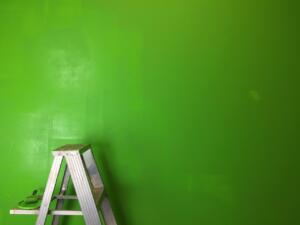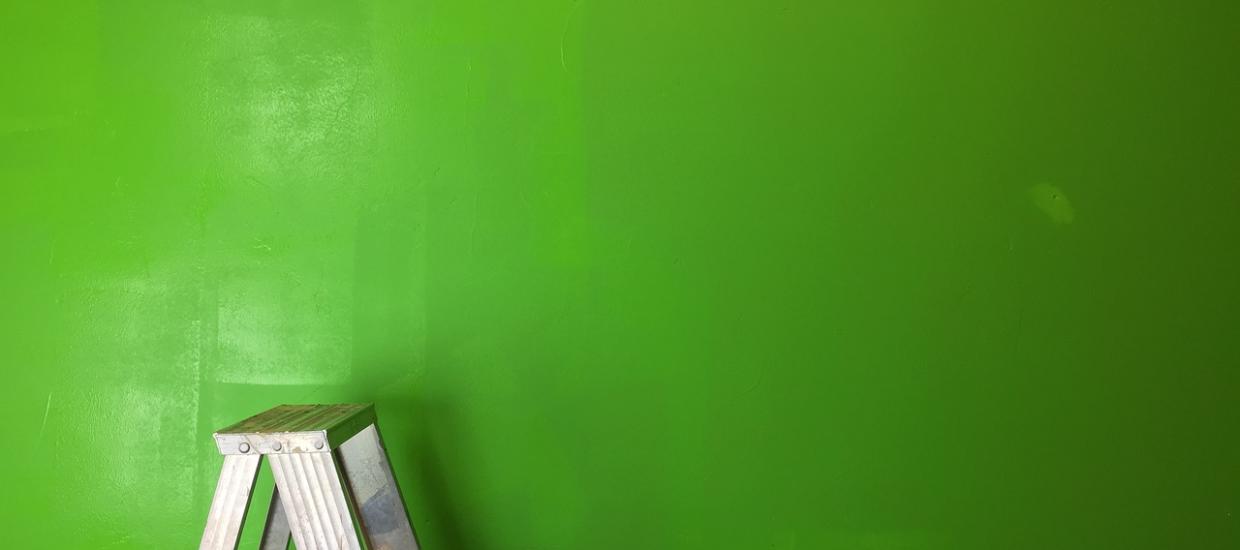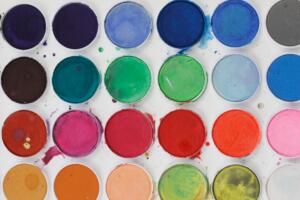Painting a room yourself can be easy if you go about it the right way. It can also be a lot of fun.
Changing a room’s color, or simply applying a fresh coat can help a space look both clean and inviting.
This is also an alternative to buying new furniture or rearranging the furniture you already have if you are wanting to spruce up an area of your home.
If you have never painted before, never fear! Here are some tips to help ensure that you get great results:

- Begin with a clean wall. Make sure to wash off any dirt, grease, or anything that shouldn’t be there. If you are using soap to clean the walls, be sure to go back over those spots with plain water so that you don’t leave soap residue.
- Sand paper any previously puttied spots, and use putty in order to have a smooth wall. If your walls have any holes or broken areas, be sure to repair those before you begin painting.
- Use trim tape to save your floors and windows, or anything else you don’t want paint on. There is special painter’s tape made for this purpose; it is easy to apply and peel off. This tape can also be applied for a long time without peeling off any existing paint on your wall, like normal masking tape might. Paint tape helps to protect the paint from getting all over as well as assists you in creating the perfect line.
- Prime the walls for maximum coverage and the best look. Priming the walls means you are just preparing them for the actual color that you will paint them. If you are painting over a dark colored wall with lighter paint, will need primer to ensure you an enhanced, even color. It is advised that painters use primer for lighter colored walls as well.
- Use a brush AND roller. In the smaller and hard to reach areas, you will need to use a paint brush. This is where the paint tape comes in handy as you are painting in those crevices and corners. Tape and brushes are also handy when it comes down to painting along trim. For most of the wall, use the roller brush to cover large areas in a shorter amount of time. Roller brush strokes also come out much more smoothly and evenly, if done properly.
- Lay the roller on the wall with sweeping strokes. Start in the middle of the wall, and roll upward and then down at a slight angle while applying pressure. Be sure to not touch the ceiling or anything you don’t want paint to be on. While you are painting, make sure to do it quickly, as you don’t want the paint to build up or create roller marks.
- Don’t forget to wrap your brush and cover paint if you take a break, even for just 10 minutes. Be sure to use a plastic bag, or plastic wrap, in order to keep your brush from drying out. Also, be sure to put the lid back on the paint can when you aren’t pouring it in order to avoid drying as well.
Painting a room may seem like a daunting task at first, but follow these tips, and you will be perfecting your painting techniques in no time!
And don’t forget to check out our article about selecting the right paint pallet for each room!




 Different brush stroke techniques will depend on the body of water itself. It mostly depends on whether the water is moving or stationary. Here are some tips for painting water that is shallow.
Different brush stroke techniques will depend on the body of water itself. It mostly depends on whether the water is moving or stationary. Here are some tips for painting water that is shallow. If you are painting underwater scenes, the colors you will use differ depending on the depth.
If you are painting underwater scenes, the colors you will use differ depending on the depth.